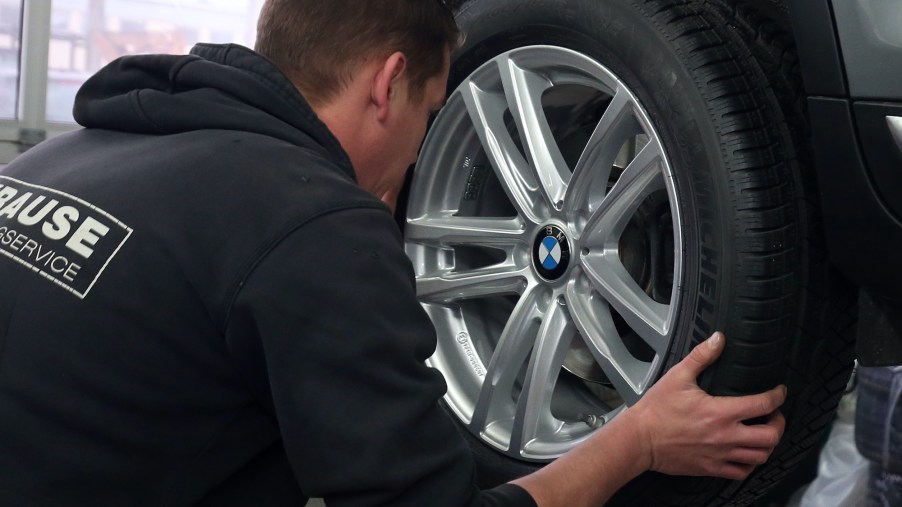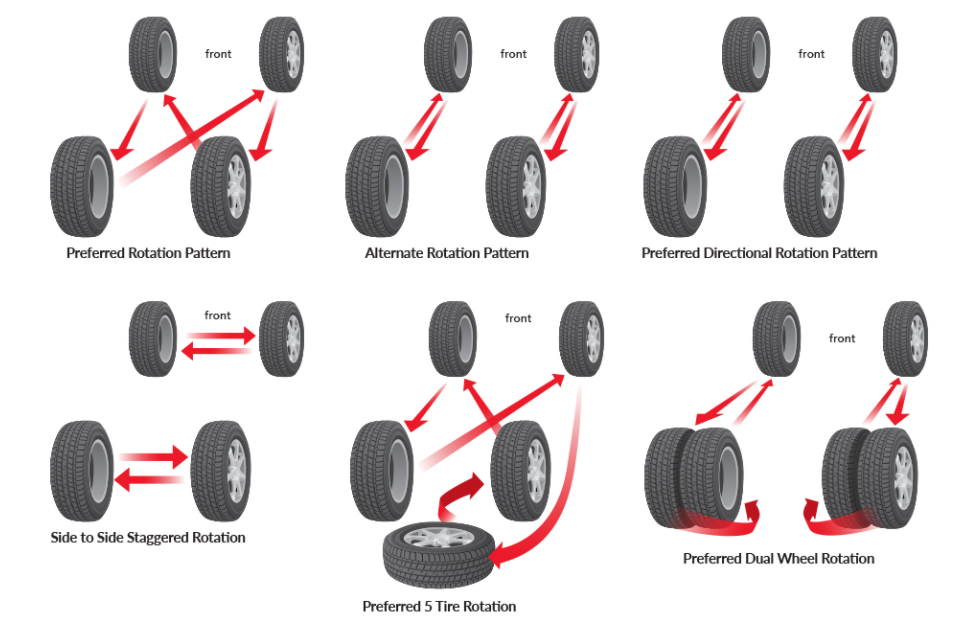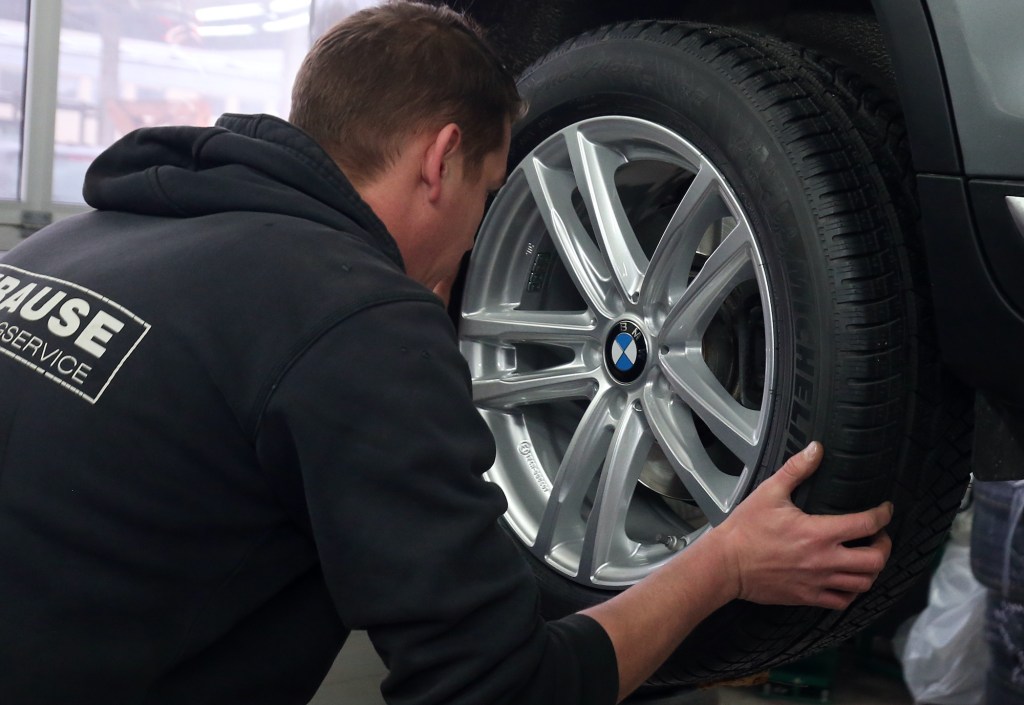
Can You Rotate Staggered Tires?
Car maintenance is key if you want to keep your car’s wheels on the road for a long time and in proper working order. As such, having the proper tire pressure is important as is having the tires rotated every so often. But what if your car has a staggered tire setup? Can they be rotated?
What is a staggered wheel setup?

A staggered wheel setup is when the rear tires are wider than the front tires and in some rare exceptions, the opposite. Some of the most popular cars that you’ll find with staggered wheel setups include the Chevrolet Corvette, Ford Mustang, BMW M3, Porsche 911, and the Honda S2000. In these platforms, a staggered setup is used for better handling characteristics.
Additionally, a car with a higher horsepower rating and a rear-drive configuration needs more grip in the rear tires, thus having more of a contact patch across the rear axle is necessary.
What is a tire rotation?
A tire rotation is when you move the car’s tires from one spot on the vehicle to another in order to extend the life of the tires, reports Discount Tire. By rotating, or changing the position of the tires, the tire tread on each one will wear down more even throughout each tire’s lifespan. Regular tire rotations can also prevent the tires from uneven wear, tire noise, and poorer ride quality. Additionally, not rotating your car’s tires can even void its manufacturer’s warranty.
Rotating front, rear, and all-wheel-drive configurations
Rotating tires on a front or rear-drive setup is really easy as you mainly need to move the front tires to the rear (FWD) and vice versa (RWD). On four-wheel and all-wheel-drive applications, you need to rotate the tires in an “X” configuration, rotating the front driver’s side to the rear passenger side and vice versa.
Can the tires on a staggered setup be rotated?

Yes, but only the tires on the same axle can be swapped. For example, the two rear tires will need to swap places straight across, as do the front ones. It only works if the tires are not directional. If they are directional, then the tires will need to be unmounted from the wheels and then swapped over. It’s a bit of a hassle, but it can be worth the added cost if it means keeping your car’s tires in good shape for many miles.
Does the spare tire need to be rotated into the mix?
If your car has a full-size spare tire, then you can add it to the rotation of the other tires. However, if your car has a half-size (donut) spare tire, then don’t rotate it in.
How often should tires be rotated?

While the intervals between tire rotations can vary depending on the type of car that you drive, how much you drive, and what kind of roads you drive on, there is a general time period to rotate them. Discount Tire recommends rotating your car’s tires every 6,000 to 8,000 miles or every other oil change. If your car’s tires are showing signs of uneven wear, then you may want to have them rotated more frequently.
Maintaining your car’s tires is an important part of the overall car care process. If want them to last as long as possible, remember to rotate them. After all, they are the only things connecting your car to the road that you’re driving on.



